Page 3
Here we examine the effect of the baffle step. Below the baffle step the driver radiates into 4Pi space.
As the frequency rises and the wave length of the radiated sound becomes short compared to the
baffle width the driver radiates in to 2Pi space as if it were mounted in an infinite baffle. For our
examples it is assumed that the transition frequency is centered around 150 Hz. SInce we have
already seen the effects of driver diameter, crossover order and crossover point on the power
response we shall limit the comparisons to B3 and LR4 crossovers. In the figures below the power is
normalized by the power radiated by an omnidirectional source radiating in to 2Pi space. The 0 dB
represents flat power response into the front hemisphere. The on axis frequency response is also
presented.
As the frequency rises and the wave length of the radiated sound becomes short compared to the
baffle width the driver radiates in to 2Pi space as if it were mounted in an infinite baffle. For our
examples it is assumed that the transition frequency is centered around 150 Hz. SInce we have
already seen the effects of driver diameter, crossover order and crossover point on the power
response we shall limit the comparisons to B3 and LR4 crossovers. In the figures below the power is
normalized by the power radiated by an omnidirectional source radiating in to 2Pi space. The 0 dB
represents flat power response into the front hemisphere. The on axis frequency response is also
presented.
Below we seen the results for a B3 and LR4 crossover at 2K with no baffle step compensation. While the on
axis response is down 6dB the radiated power below the baffle step is only down 3dB. The reason is that
while the sound intensity is a factor of 4 lower below the baffle step, the sound radiates over twice the area.
Thus 1/4 x 2 = 1/2 = -3dB in power.
axis response is down 6dB the radiated power below the baffle step is only down 3dB. The reason is that
while the sound intensity is a factor of 4 lower below the baffle step, the sound radiates over twice the area.
Thus 1/4 x 2 = 1/2 = -3dB in power.
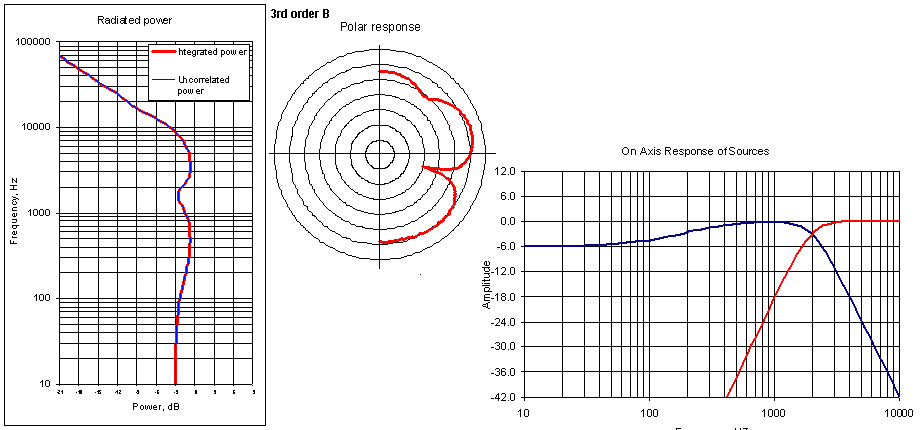
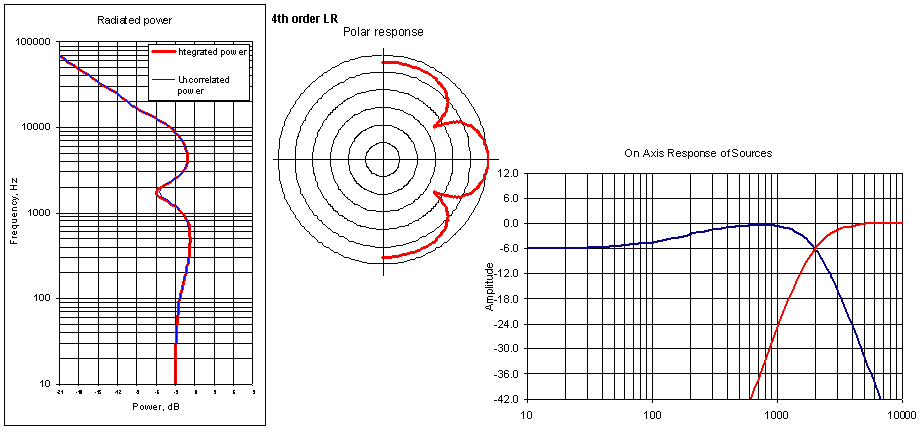
The next two figure show the B3 and LR4 crossover with full baffle step compensation. It is often said that
while full baffle step compensation yields flat on axis response such system often sound bass heavy. This is
often mistakenly attributed to reflections off the wall behind the speaker or floor or both but in reality it is
simply the result of excessive power being radiated into an enclosed space at low frequency.
while full baffle step compensation yields flat on axis response such system often sound bass heavy. This is
often mistakenly attributed to reflections off the wall behind the speaker or floor or both but in reality it is
simply the result of excessive power being radiated into an enclosed space at low frequency.
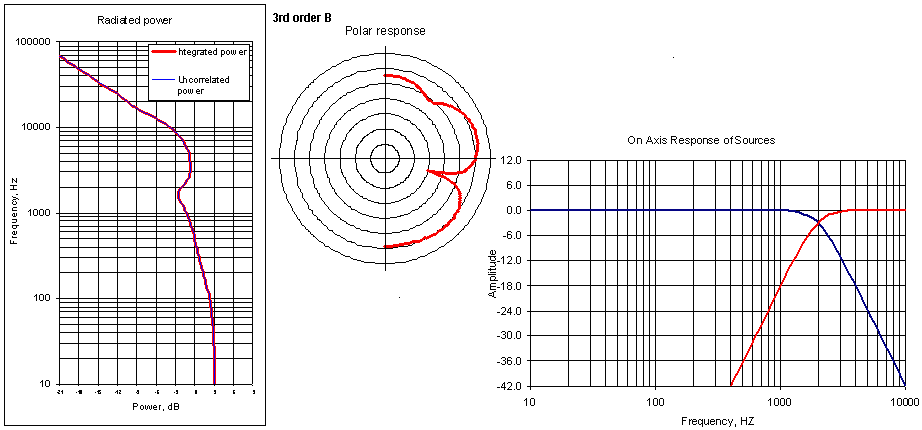
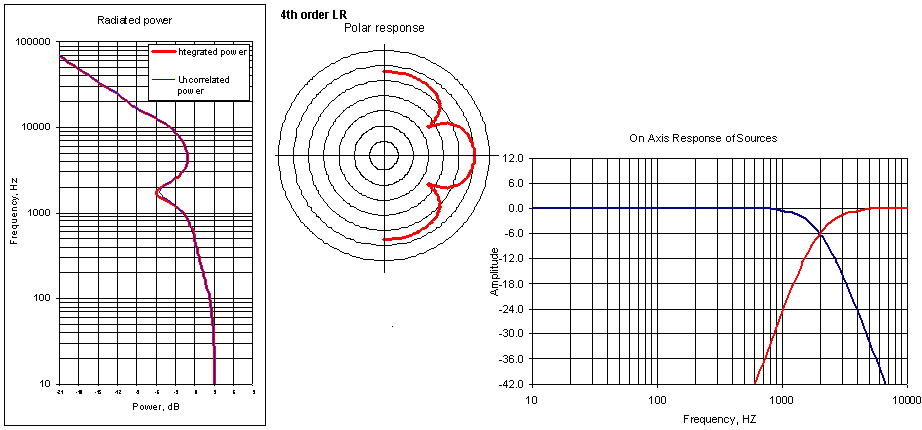
The last figure on this page shows the power response when only a 3dB correction to the baffle
step is applied. The on axis response is not flat but the integrated power at low frequency is.
While this seems to correlate well with observation is smaller rooms there are other factors to
consider. Vibration of wall dissipates power at low frequency and low frequency energy can easily
be transmitted through most structures. Additionally, we must also consider the interaction of
both speakers in a stereo configuration. This is addressed on the next page.
step is applied. The on axis response is not flat but the integrated power at low frequency is.
While this seems to correlate well with observation is smaller rooms there are other factors to
consider. Vibration of wall dissipates power at low frequency and low frequency energy can easily
be transmitted through most structures. Additionally, we must also consider the interaction of
both speakers in a stereo configuration. This is addressed on the next page.
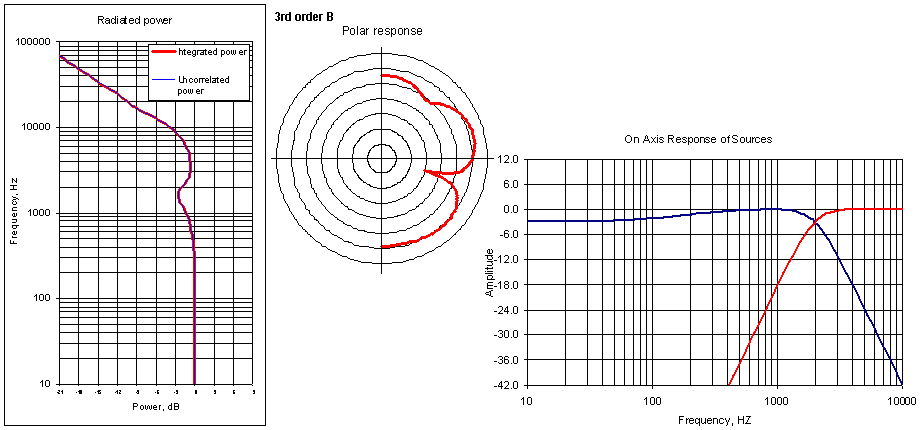
Tech Design.....
___________________________
Consideration of Power Response in Speaker Design:
Crossover Choice and Setup.
___________________________
Consideration of Power Response in Speaker Design:
Crossover Choice and Setup.

